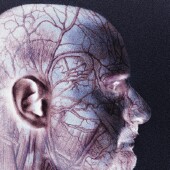
TUESDAY, Aug. 9 (HealthDay News) — One-third of people who survive a nearly fatal subarachnoid hemorrhage — a type of stroke that involves bleeding into the brain — experience the symptoms of post-traumatic stress disorder (PTSD), researchers have found.
The trigger for these disabling symptoms seems to be the survivors’ fear of having another brain hemorrhage, which is most often caused by a ruptured aneurysm. These fears may persist even though patients’ risk for a recurrence remains low, at between 1 and 3 percent, according to Adam J. Noble of King’s College London and colleagues.
In conducting the study, published in the August issue of Neurosurgery, Noble’s team analyzed 142 patients who were assessed for PTSD symptoms up to 18 months after they had experienced a brain hemorrhage. About one in three patients met criteria for a diagnosis of PTSD, the researchers noted. Their symptoms included intrusive thoughts, avoidant behaviors and hyper-alertness that interfered with their daily activities.
The investigators found that patients with PTSD symptoms were more fearful of having another brain hemorrhage, more pessimistic about their odds of avoiding another such event, and also more fearful of experiencing other unrelated life-threatening events, such as a heart attack or lung cancer.
Those patients who were deemed most fearful were less likely to be comforted by assurances from their doctors that they were unlikely to have a recurrence of the brain hemorrhage, the report indicated.
Treatment that includes therapies for PTSD could help patients with ongoing fears of recurrent brain hemorrhage, reducing their negative thoughts and improving their daily functioning, the researchers said in a journal news release.
“PTSD treatment could alleviate fears of subarachnoid hemorrhage recurrence and promote better outcome,” Noble and colleagues wrote.
More information
The U.S. National Institute of Mental Health has more about post-traumatic stress disorder.

